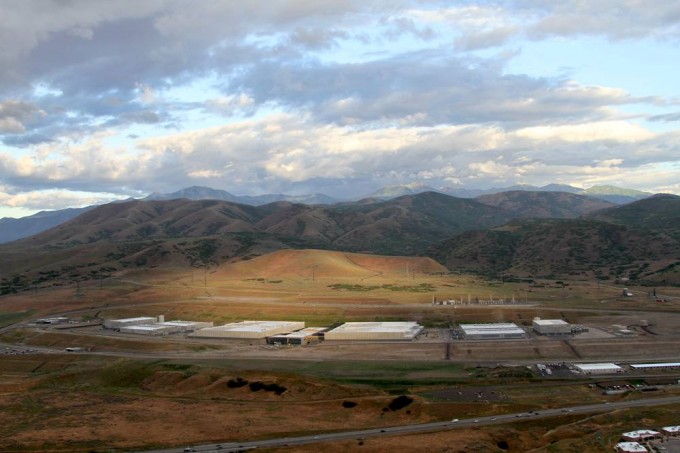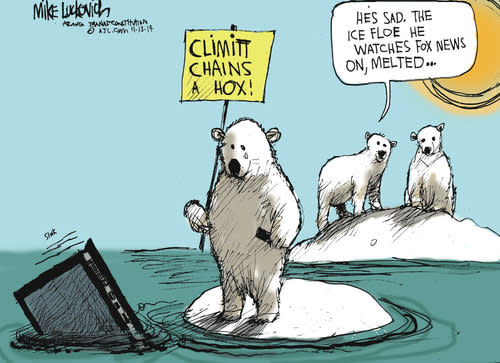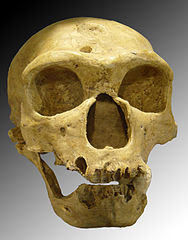1) Plague

The plague was one of the biggest killers of the Middle Ages – it had
a devastating effect on the population of Europe in the 14th and 15th
centuries. Also known as the Black Death, the plague (caused by the
bacterium called
Yersinia pestis) was carried by fleas most
often found on rats. It had arrived in Europe by 1348, and thousands
died in places ranging from Italy, France and Germany to Scandinavia,
England, Wales, Spain and Russia.
The deadly bubonic plague caused oozing swellings (buboes) all over
the body. With the septicaemic plague, victims suffered from skin that
was darkly discolored (turning black) as a result of toxins in the
bloodstream (one reason why the plague has subsequently been called the
‘Black Death’). The extremely contagious pneumonic plague could be
contracted by merely sneezing or spitting, and caused victims’ lungs to
fill up.
The Black Death killed between a third and half of the population of
Europe. Contemporaries did not know, of course, what caused the plague
or how to avoid catching it. They sought explanations for the crisis in
God’s anger, human sin, and outsider/marginal groups, especially Jews.
If you were infected with the bubonic plague, you had a 70–80 per cent
chance of dying within the next week. In England, out of every hundred
people, perhaps 35–40 could expect to die from the plague.
As a result of the plague, life expectancy in late 14th-century
Florence was just under 20 years – half of what it had been in 1300.
From the mid-14th-century onwards, thousands of people from all across
Europe – from London and Paris to Ghent, Mainz and Siena – died. A large
number of those were children, who were the most vulnerable to the
disease.
2) Travel

People in the medieval period faced a host of potential dangers when traveling.
A safe, clean place to sleep upon demand was difficult to find. Travelers often had to sleep out in the open – when traveling during
the winter, they ran the risk of freezing to death. And while traveling
in groups provided some safety, one still might be robbed or killed by
strangers – or even one’s fellow travelers.
Nor were food and drink provided unless the traveler had found an
inn, monastery, or other lodging. Food poisoning was a risk even then,
and if you ran out of food, you had to forage, steal, or go hungry.
Medieval travelers could also be caught up in local or regional
disputes or warfare, and be injured or thrown into prison. Lack of
knowledge of foreign tongues could also lead to problems of
interpretation.
Illness and disease could also be dangerous, and even fatal. If one
became unwell on the road, there was no guarantee that decent – or
indeed any – medical treatment could be received.
Travelers might also fall victim to accident. For example, there was
a risk of drowning when crossing rivers – even the Holy Roman emperor,
Frederick I, drowned in 1190 when crossing the Saleph river during the
Third Crusade. Accidents might also happen upon arrival: in Rome during
the 1450 jubilee, disaster struck when some 200 people in the huge crowd
crossing the great bridge of Sant’ Angelo tumbled over the edge and
drowned.
While it was faster to travel by sea than land, stepping onto a boat
presented substantial risks: a storm could spell disaster, or navigation
could go awry, and the medieval wooden ships used were not always equal
to the challenges of the sea. However, by the later Middle Ages, sea
travel was becoming faster and safer than ever before.
An average traveler in the medieval period could expect to cover
15–25 miles a day on foot or 20–30 on a horse, while sailing ships might
make 75–125 miles a day.
3) Famine
Famine was a very real danger for medieval men and women. Faced with
dwindling food supplies due to bad weather and poor harvests, people
starved or barely survived on meager rations like bark, berries and
inferior corn and wheat damaged by mildew.
Those eating so little suffered malnutrition, and were therefore very
vulnerable to disease. If they didn’t starve to death, they often died
as a result of the epidemics that followed famine. Illnesses like
tuberculosis, sweating sickness, smallpox, dysentery, typhoid,
influenza, mumps and gastrointestinal infections could and did kill.
The Great Famine of the early 14th century was particularly bad:
climate change led to much colder than average temperatures in Europe
from c1300 – the ‘Little Ice Age’. In the seven years between 1315 and
1322, western Europe witnessed incredibly heavy rainfall, for up to 150
days at a time.
Farmers struggled to plant, grow and harvest crops. What meager crops
did grow were often mildewed, and/or terribly expensive. The main food
staple, bread, was in peril as a result. This also came at the same time
as brutally cold winter weather.
At least 10 per cent – perhaps close to 15 per cent – of people in England died during this period.
4) Childbirth
Today, with the benefits of ultrasound scans, epidurals and fetal
monitoring, the risk for mother and baby during pregnancy and childbirth
is at an all-time low. However, during the medieval period, giving
birth was incredibly perilous.
Breech presentations of the baby during labor often proved fatal for
both mother and child. Labor could go on for several days, and some
women eventually died of exhaustion. While Caesarean sections were
known, they were unusual other than when the mother of the baby was
already dead or dying, and they were not necessarily successful.
Midwives, rather than trained doctors, usually attended pregnant
women. They helped the mother-to-be during labor and, if needed, were
able to perform emergency baptisms on babies in danger of dying. Most
had received no formal training, but relied on practical experience
gleaned from years of delivering babies.
New mothers might survive the labour, but could die from various
postnatal infections and complications. Equipment was very basic, and
manual intervention was common. Status was no barrier to these problems –
even Jane Seymour, the third wife of Henry VIII, died soon after giving
birth to the future Edward VI in 1537.
5) Infancy and childhood

Infancy was particularly dangerous during the Middle Ages – mortality
was terribly high. Based on surviving written records alone, scholars
have estimated that 20–30 per cent of children under seven died, but the
actual figure is almost certainly higher.
Infants and children under seven were particularly vulnerable to the
effects of malnutrition, diseases, and various infections. They might
die due to smallpox, whooping cough, accidents, measles, tuberculosis,
influenza, bowel or stomach infections, and much more. The majority of
those struck down by the plague were also children. Nor, with chronic
malnutrition, did the breast milk of medieval mothers carry the same
immunity and other benefits of breast milk today.
Being born into a family of wealth or status did not guarantee a long
life either. We know that in ducal families in England between 1330 and
1479, for example, one third of children died before the age of five.
6) Bad weather
The vast majority of the medieval population was rural rather than
urban, and the weather was of the utmost importance for those who worked
or otherwise depended on the land. But as well as jeopardizing
livelihoods, bad weather could kill.
Consistently poor weather could lead to problems sowing and growing
crops, and ultimately the failure of the harvest. If summers were wet
and cold, the grain crop could be destroyed. This was a major problem,
as cereal grains were the main food source for most of the population.
With less of this on hand, various problems would occur, including
grain shortages, people eating inferior grain, and inflation, which
resulted in hunger, starvation, disease, and higher death rates.
This was especially the case from the 14th through to the 16th
centuries, when the ice pack grew. By 1550, there had been an expansion
of glaciers worldwide. This meant people faced the devastating effects
of weather that was both colder and wetter.
Medieval men and women were therefore eager to ensure that weather
conditions stayed favorable. In Europe, there were rituals for
plowing, sowing seeds, and the harvesting of crops, as well as special
prayers, charms, services, and processions to ensure good weather and
the fertility of the fields. Certain saints were thought to protect
against the frost (St Servais), have power over the wind (St Clement) or
the rain and droughts (St Elias/Elijah) and generally the power of the
saints and the Virgin Mary were believed to protect against storms and
lightning.
People also believed the weather was not merely a natural occurrence.
Bad weather could be caused by the behavior of wicked people, like
murder, sin, incest, or family quarrels. It could also be linked to
witches and sorcerers, who were thought to control the weather and
destroy crops. They could, according to one infamous treatise on witches
– the
Malleus Maleficarum, published in 1486 – fly in the air
and conjure storms (including hailstorms and tempests), raise winds and
cause lightning that could kill people and animals.
7) Violence
Whether as witnesses, victims or perpetrators, people from the
highest ranks of society to the lowest experienced violence as an
omnipresent danger in daily life.
Medieval violence took many forms. Street violence and brawls in
taverns were not uncommon. Vassals might also revolt against their
lords. Likewise, urban unrest also led to uprisings – for example, the
lengthy rebellion of peasants in Flanders of 1323–28, or the Peasants’
Revolt of 1381 in England.
Medieval records demonstrate the presence of other types of violence
also: rape, assault and murder were not uncommon, nor was accidental
homicide. One example is the case of Maud Fras, who was hit on the head
and killed by a large stone accidentally dropped on her head at
Montgomery Castle in Wales in 1288.
Blood feuds between families that extended over generations were very
much evident. So was what we know today as domestic violence. Local or
regional disputes over land, money or other issues could also lead to
bloodshed, as could the exercise of justice. Innocence or guilt in
trials were at times decided by combat ordeals (duels to the death). In
medieval Wales, political or dynastic rivals might be blinded, killed or
castrated by Welsh noblemen to consolidate their positions.
Killing and other acts of violence in warfare were also omnipresent,
from smaller regional wars to larger-scale crusades from the end of the
11th century, fought by many countries at once. Death tolls in battle
could be high: the deadliest clash of the Wars of the Roses, the battle
of Towton (1461), claimed between 9,000 and 30,000 lives, according to
contemporary reports.
8) Heresy

It could also be dangerous to disagree. People who held theological
or religious opinions that were believed to go against the teachings of
the christian cult were seen as heretics in medieval christian Europe.
These groups included jews, muslims and medieval christians whose
beliefs were considered to be unorthodox, like the Cathars.
Kings, missionaries, crusaders, merchants and others – especially
from the late 11th century – sought to ensure the victory of christendom
in the Mediterranean world. The First Crusade (1096–99) aimed to
capture Jerusalem – and finally did so in 1099. Yet the city was soon
lost, and further crusades had to be launched in a bid to regain it.
The jews and muslims also suffered persecution, expulsion and death in christian Europe. In England, anti-Semitism resulted in massacres of
Jews in York and London in the late 12th century, and Edward I banished
all Jews from England in 1290 – they were only permitted to return in
the mid-1600s.
From the eighth century, efforts were also made to retake Iberia from
Muslim rule, but it was not until 1492 that the entire peninsula was
recaptured. This was part of an attempt in Spain to establish a united,
single christian delusion and suppress heresy, which involved setting up
the Spanish Inquisition in 1478. As a result, the jews were expelled
from Spain in 1492, and muslims were only allowed to stay if they
converted to christianity.
Holy wars were also waged on christians who were widely considered to
be heretics. The Albigensian Crusade was directed at the Cathars (based
chiefly in southern France) from 1209–29 – and massacres and more
inquisitions and executions followed in the later 13th and 14th
centuries.
9) Hunting
Hunting was an important pastime for medieval royalty and the
aristocracy, and skill in the sport was greatly admired. The emperor
Charlemagne was recorded as greatly enjoying hunting in the early ninth
century, and in England William the Conqueror sought to establish royal
forests where he could indulge in his love of the hunt. But hunting was
not without risks.
Hunters could easily be injured or killed by accidents. They might
fall from their horse, be pierced by an arrow, be mauled by the horns of
stags or tusks of boars, or attacked by bears.
Status certainly did not guarantee safety. Many examples exist of
kings and nobles who met tragic ends as a result of hunting. The
Byzantine emperor Basil I died in 886 after apparently having his belt
impaled on the horns of a stag and being dragged more than 15 miles
before being freed.
In 1100, King William II (William Rufus) was famously killed by an
arrow in a supposed hunting accident in the New Forest. Likewise, in
1143, King Fulk of Jerusalem died in a hunting accident at Acre, when
his horse stumbled and his head was crushed by his saddle.
10) Early or sudden death
Sudden or premature death was common in the medieval period. Most
people died young, but death rates could vary based on factors like
status, wealth, location (higher death rates are seen in urban
settlements), and possibly gender. Adults died from various causes,
including plague, tuberculosis, malnutrition, famine, warfare, sweating
sickness and infections.
Wealth did not guarantee a long life. Surprisingly, well-fed monks
did not necessarily live as long as some peasants. Peasants in the
English manor of Halesowen might hope to reach the age of 50, but by
contrast poor tenants in same manor could hope to live only about 40
years. Those of even lower status (cottagers) could live a mere 30
years.
By the second half of the 14th century, peasants there were living
five to seven years longer than in the previous 50 years. However, the
average life expectancy for ducal families in England between 1330 and
1479 generally was only 24 years for men and 33 for women. In Florence,
laypeople in the late 1420s could expect to live only 28.5 years (men)
and 29.5 years (women).
Dying a ‘good’ death was very important to medieval people, and was
the subject of many books. People often worried about ‘sudden death’
(whether in battle, from natural causes, by execution, or an accident)
and what would happen to those who died without time to prepare and
receive the last rites. Written charms, for example, were thought to
provide protection against sudden death – whether against death in
battle, poison, lightning, fire, water, fever or other dangers.




























